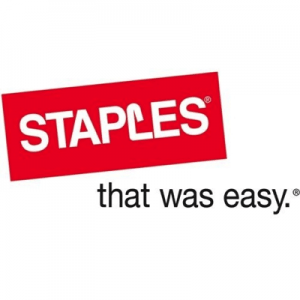On Monday, I posted one of my pet peeves on Twitter: I hate when people look at the hard costs (e.g gift card activation fees) to calculate their manufactured spending costs when relating to award travel (whether it be for flights or hotels) rather than the opportunity costs. This has been on my mind recently due to the change to the Wyndham rewards program that lets you book any hotel for 15,000 points. Both Wyndham credit cards earn 2x points on all purchases, so you basically need $7,500 in spend to receive a free night at any Wyndham property worldwide.
I’ve seen a lot of readers comment on other blogs that they are able to manufacture $7,500 in spend for crazy low amounts. My argument is that at the very minimum you should be looking at how much you could have earned if you used a 2% cash back card. Some people agreed with my premise (e.g Freequent Flyer) while others disagreed (e.g Trevor from Taggingmiles).
Hard Costs
If you look at just your hard costs of manufactured spending award travel, it presents a very positive picture. If we go back to the Wyndham example and look at the activation costs of 15 $500 gift cards. This would range from $3.95 to $6.95 each (or $59.25-$104.25 per night).
I can think of two reasons why people like to use this method when thinking about their cost:
- It’s how much they monetarily paid for those points
- Would they have actually bothered if they were just getting 2% cash back for a profit of $45.75 to $90.75? If not, isn’t the opportunity cost irrelevant?
Opportunity Costs
Whenever I look at a new credit card’s minimum spend requirement or how much it would cost to manufacture award travel, I always compare it to a 2% cash back card. That’s because I know that is the bare minimum I could be getting if I didn’t put the expenses on that credit card.
For example a cash sign up bonus of $300 sounds great, but if it has a minimum spend requirement of $10,000 then the bonus is actually pretty average. That’s because if I put that same $10,000 spend on a 2% cash back card I’d earn $200 anyway, so the “true” value of the sign up bonus is really only $100 (plus whatever points/cash back you earned from the $10,000 in spend).
We can also use this when thinking about manufacturing spend for free hotel nights or flights. Again, let’s look at the Wyndham example. We need to spend $7,500 to get enough points for a free night, if we put that same spending on a 2% cash back card we’d earn $150.
My argument is that when looking at the cost of that free award night, at bare minimum you should be looking at what you’d get back on a 2% cash back card. After all, I could use that $150 to book a hotel elsewhere. Now the 2% figure should only be used as a baseline, as we all know it’s possible to get more than 2% on purchases when you have a category bonus (actually it’s possible to get more than 2% even without a category bonus).
There are lots of elements you should take into account:
- Time: Milesnomics might kill me if I didn’t mention this, after all he wants a credit card that’ll give him more of it and he has blogged about the importance of calculating it, multiple times. Your time is limited, you can only do so many things. If you could be spending your time doing something else more valuable than running around manufactured spending, then you need to take that into account.
- Credit cards: Not everybody has access to the same credit cards, this can be due to credit score issues or the fact that you simply haven’t applied for that card due to other cards being a priority.
- Limits: Everybody is going to have a limit on how much spend they can manufacture. Your limit might be due to time, unloading methods, credit limits or how much money you are happy to float.
I generally just use the 2% figure as my absolute minimum value I should accept, knowing that I’ll definitely be able to get at least that much. Because of this I don’t find manufacturing spend for Wyndham really makes sense, I prefer non chain hotels anyway and most of the time I’m able to find something I like for under $150. When I MS, I’m usually getting much more than 2% as well, so it makes the value proposition even worse for Wyndham.
Final Thoughts
Freequent Flyer has a great series of posts on imputed redemption values for hotels which talks more about how much spend you need to manufacture for each hotel chain and the associated opportunity cost. Trevor from Taggingmiles will also have a post up in the next couple of days about why he disagrees with my point of view which I’m looking forward to reading. It’ll be interesting to see if he can change my mind.
Regardless of whether this topic interests you, both of those blogs are well worth visiting on a regular basis. What are your thoughts? How do you calculate the cost of your manufactured spending? Let me know in the comments.
Also if you’re another blogger and interested in writing a counter point (like Trevor), let me know and I’ll add a link to your post here as well.





